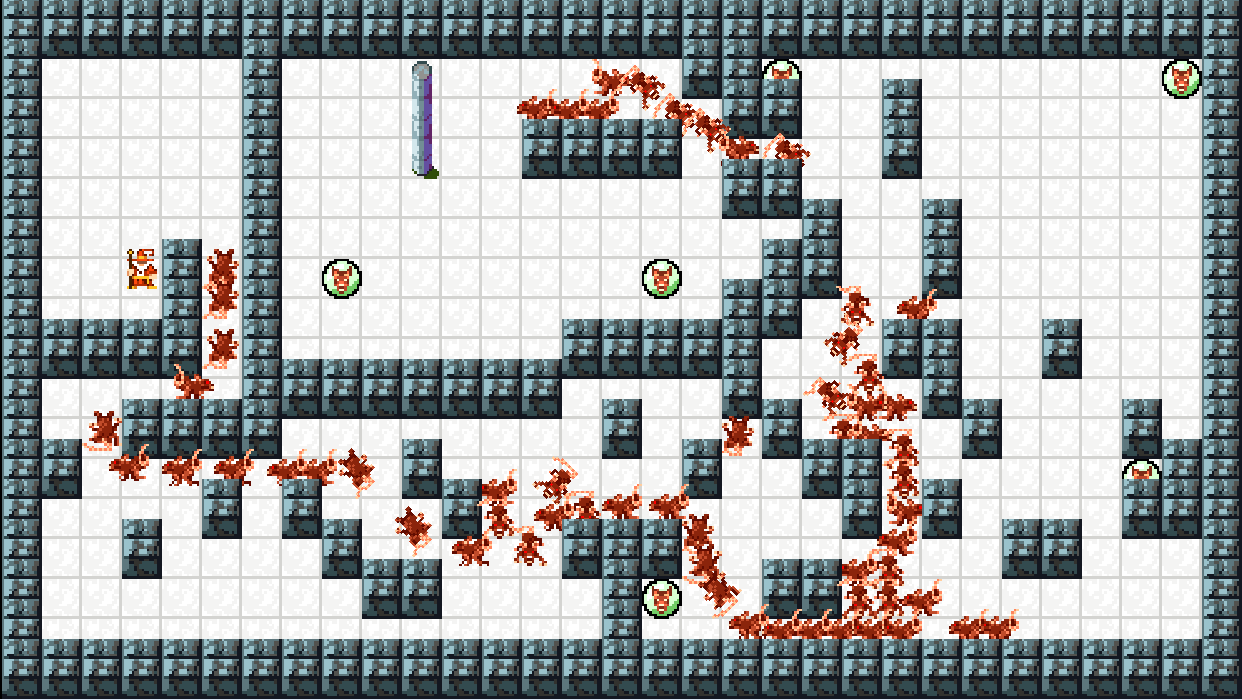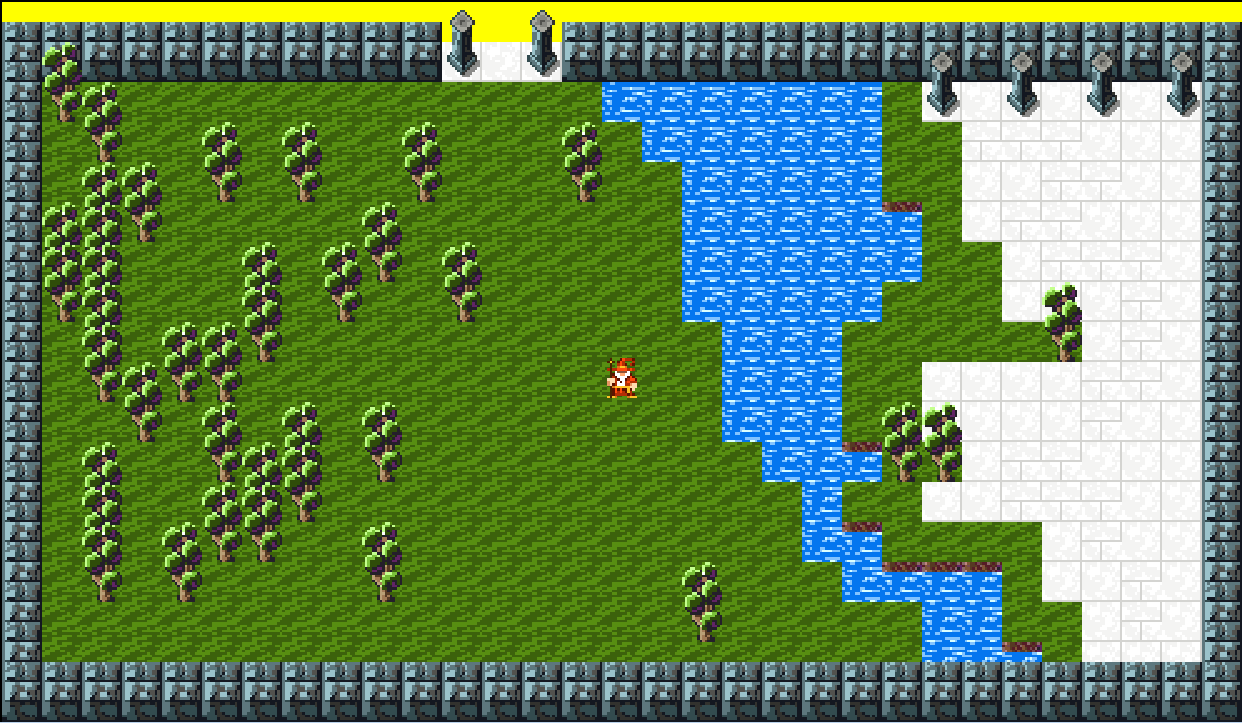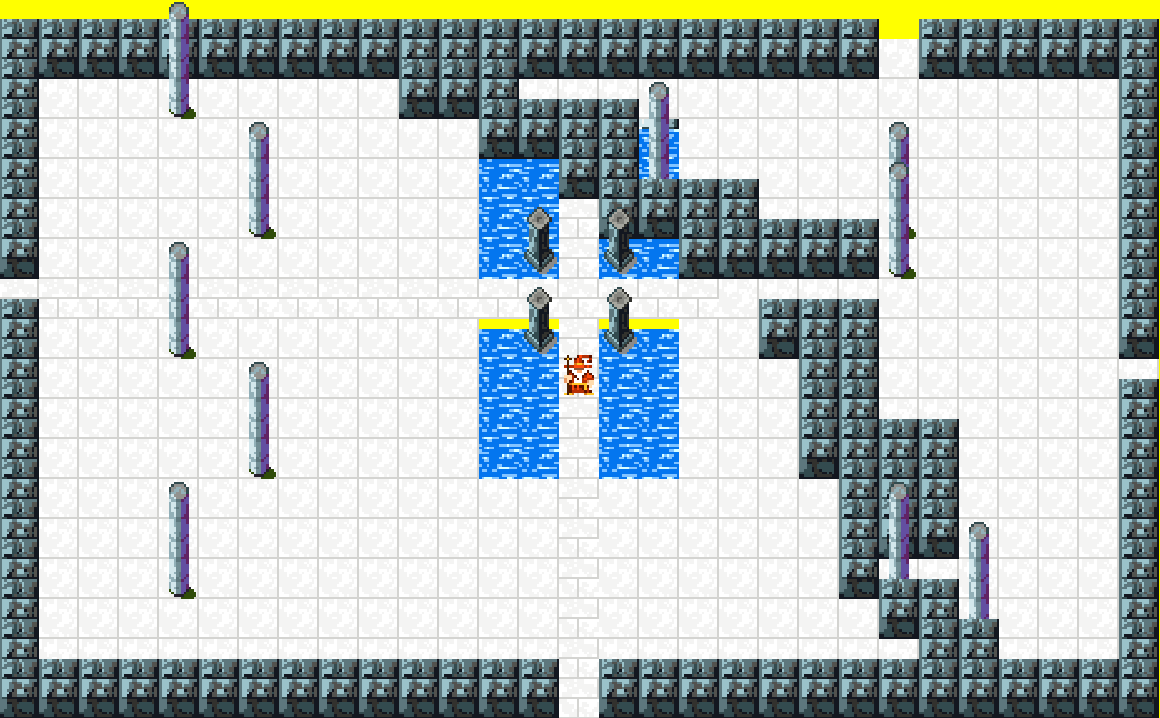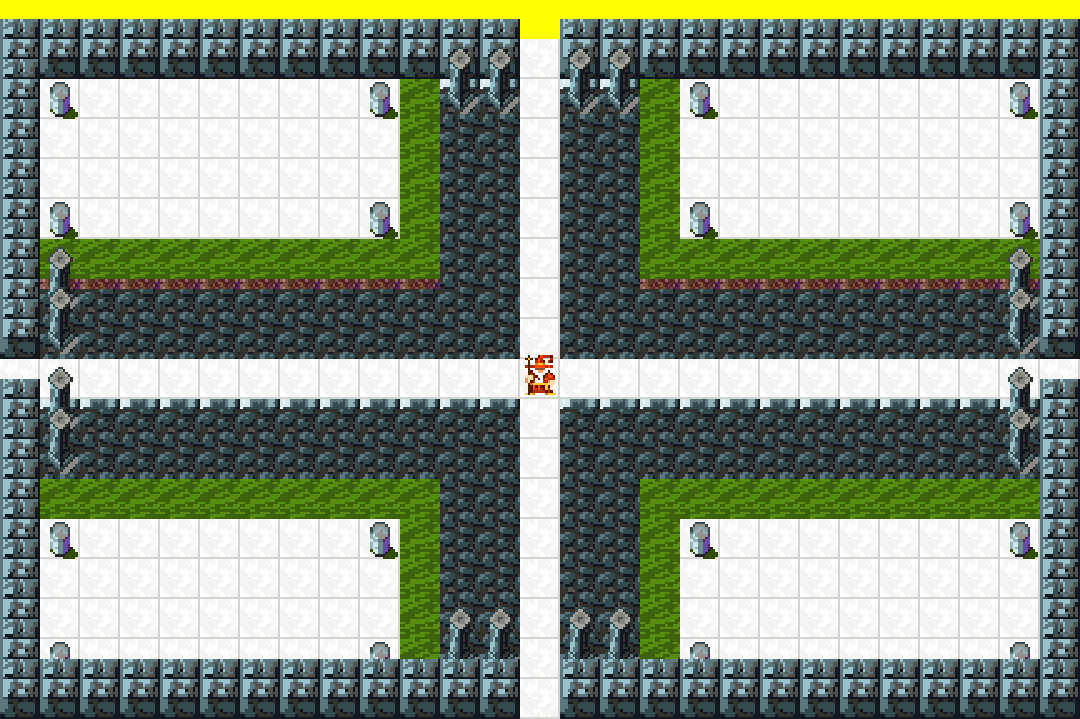As is usually the case with a major code overhaul, I disabled many features so I could test stuff out and get it working with each existing system, one at a time. One of the final things I need to restore is the summon AI for targeting and attacking enemies. Their behavior is slightly different from monsters, because they never move to reach another target, but it uses the same code at least.
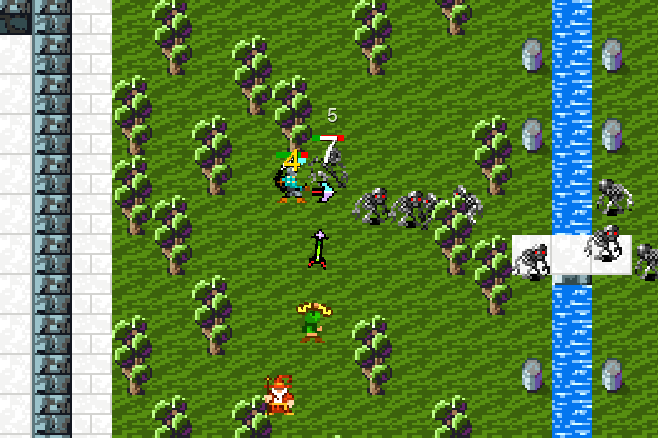
So far, Aeox attacks properly (now with 8-way attacking!) and Shaedu also aims and hits properly. There’s still an issue with her firing trick shots at moving targets between obstacles (like through a doorway if the monster walks past it), which probably has to do with her search interval and vision check code. Something to fix tomorrow, along with the Bloodfire attacks.
